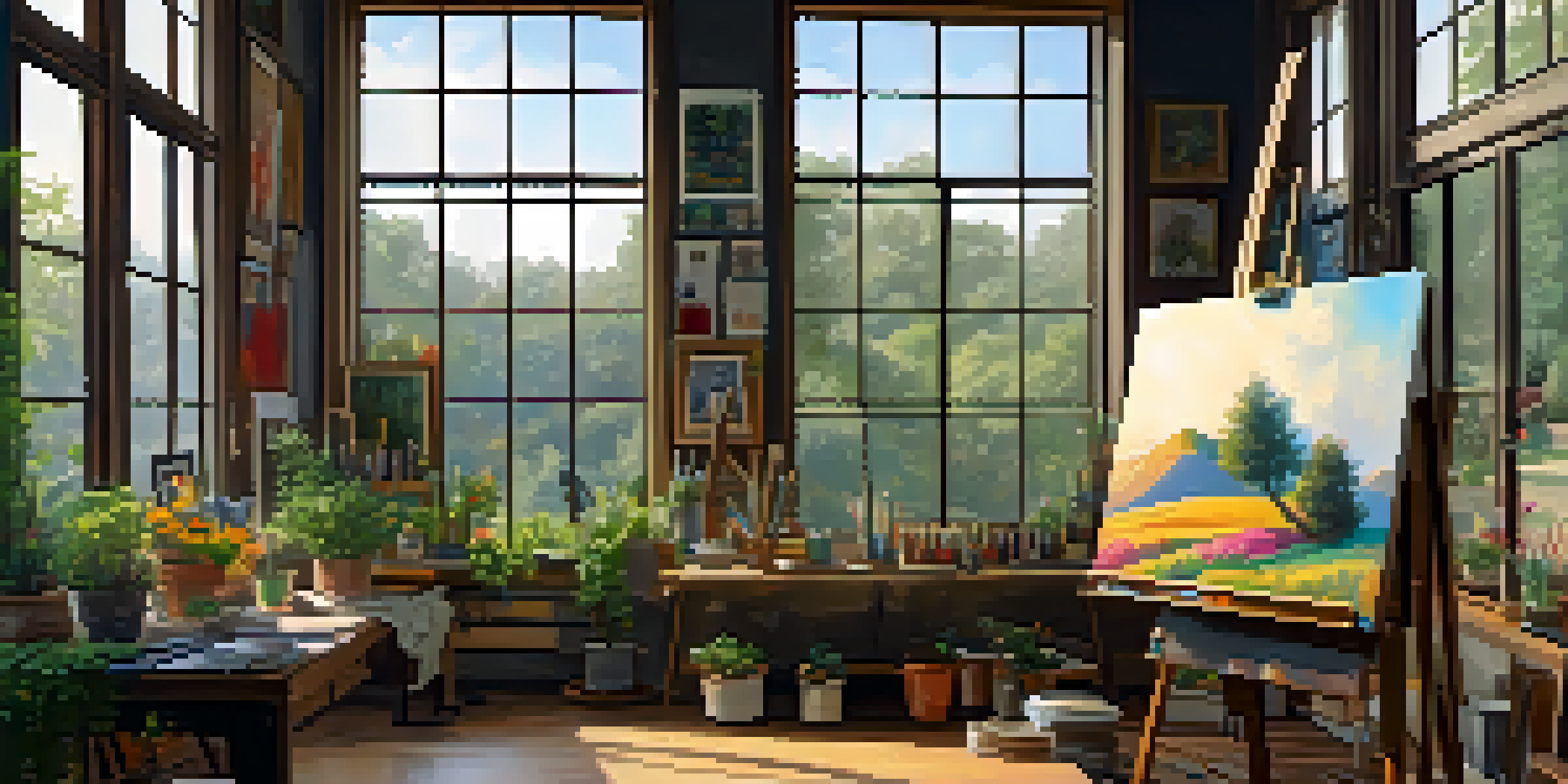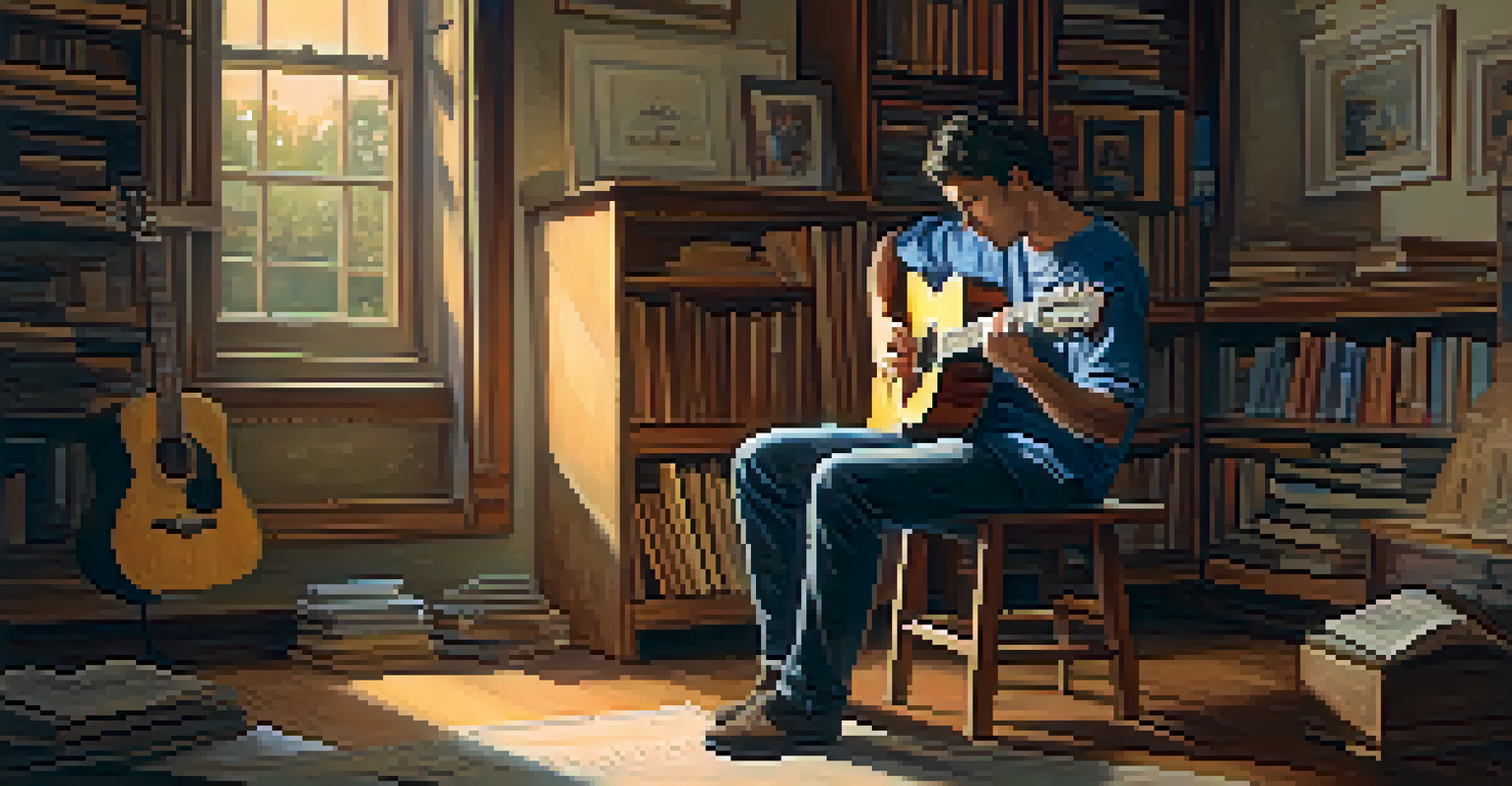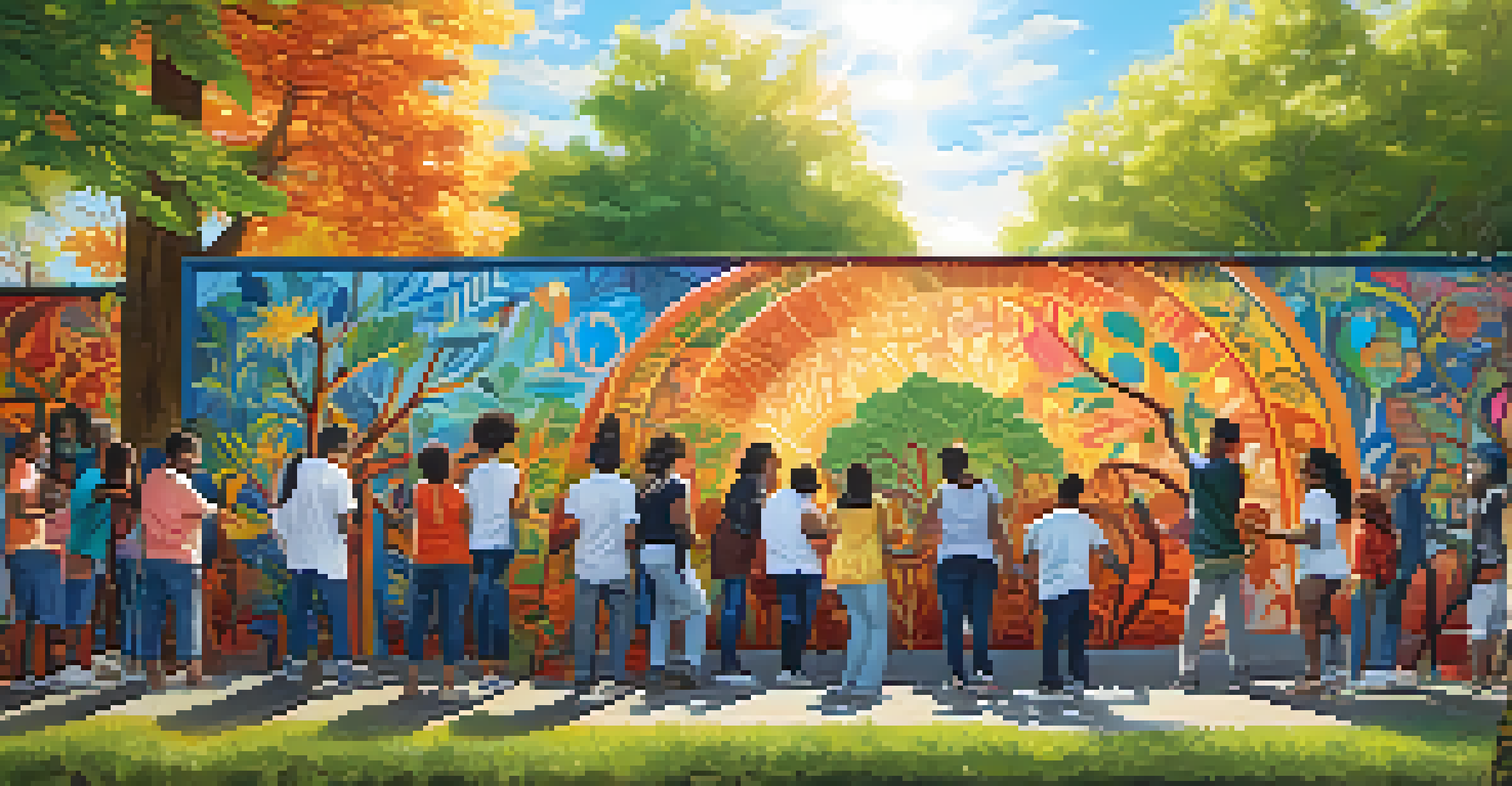The Role of Art in Self-Expression and Emotional Release

Art as a Reflection of Personal Identity
Art has long been a mirror reflecting our inner selves, allowing individuals to showcase their unique identities. When we create or engage with art, we often channel our beliefs, experiences, and emotions into our work. This act of creation can be a powerful affirmation of who we are, making art an essential medium for self-discovery.
Every artist dips his brush in his own soul, and paints his own nature into his pictures.
For instance, consider a painter who uses vibrant colors to express joy or darker tones to convey sadness. Each brushstroke can tell a story, revealing layers of complexity about the artist's identity and state of mind. By sharing their art with others, they invite viewers to engage with and understand their personal narrative on a deeper level.
Ultimately, art becomes a language through which we communicate our feelings and thoughts, sometimes more effectively than words ever could. It encourages us to explore and express parts of ourselves that may be difficult to articulate, reinforcing the idea that we are all uniquely human.
The Therapeutic Benefits of Artistic Expression
Engaging in artistic activities has been shown to provide significant therapeutic benefits. Whether it’s painting, writing, or dancing, these forms of expression can help alleviate stress and anxiety. The process of creating art can serve as a form of emotional release, allowing individuals to process their feelings in a safe and constructive way.

For example, art therapy is increasingly recognized in mental health fields as a valuable tool for healing. Clients might use drawing or sculpting to express emotions that are otherwise hard to communicate. This not only helps them to confront their feelings but also fosters personal growth and resilience.
Art Reflects Personal Identity
Art serves as a powerful medium for individuals to express their unique identities and personal narratives.
Moreover, the simple act of creating can lead to a sense of accomplishment and increased self-esteem. As individuals reflect on their artistic journey, they often discover newfound strengths and insights, further enhancing their emotional well-being.
Art as a Means of Emotional Release
Many artists find that creating art allows them to release pent-up emotions. When feelings become overwhelming, picking up a paintbrush or a pen can provide an outlet for expression that feels both liberating and cathartic. This emotional release can be particularly beneficial during challenging times, helping individuals to navigate their feelings more effectively.
Art enables us to find ourselves and lose ourselves at the same time.
Imagine a writer who pours their heart into a poem after a breakup. The act of writing not only helps them process their grief but also transforms pain into something beautiful and relatable. This transformation often leads to a sense of closure and understanding, making it easier to move forward.
Thus, art serves as a safe space where emotions can flow freely without judgment. It becomes a sanctuary for those seeking to understand and release their feelings, fostering a deeper connection to themselves and their experiences.
Connecting with Others Through Artistic Expression
Art has an incredible power to connect people across diverse backgrounds and experiences. When individuals share their art, they invite others to engage with their emotions and stories, fostering empathy and understanding. This connection can be particularly significant in community settings, where art serves as a bridge between different cultures and perspectives.
For instance, community art projects often bring together people from varied walks of life to collaborate on a shared vision. This collective creativity not only enhances social bonds but also encourages dialogue, allowing participants to express their unique stories while learning from one another.
Art as Emotional Release
Creating art provides a cathartic outlet for emotions, helping individuals process their feelings in a constructive way.
By participating in these collaborative efforts, individuals can feel less isolated in their experiences. The shared act of creation becomes a powerful reminder that we are all connected through our emotions and stories, emphasizing the unifying role of art in society.
Art as a Tool for Advocacy and Change
Throughout history, art has been harnessed as a tool for social change and advocacy. Artists often use their platforms to raise awareness about critical issues, from environmental concerns to human rights. This ability to convey powerful messages through visual or performance art inspires action and encourages collective reflection.
Consider street art, which can transform public spaces into canvases for social commentary. Artists like Banksy use their work to provoke thought and challenge societal norms, engaging the public in conversations that might otherwise be overlooked. This not only amplifies marginalized voices but also invites viewers to reconsider their perspectives.
In this way, art becomes a catalyst for dialogue and change. It encourages us to explore our values and beliefs, motivating us to take a stand and advocate for a better world through the lens of creativity.
Finding Your Personal Artistic Medium
Discovering your preferred form of artistic expression can be a journey of self-exploration. Whether it’s painting, writing, music, or dance, each medium offers unique avenues for emotional release and self-discovery. The key is to find what resonates with you personally, allowing you to express your emotions authentically.
For example, someone might find solace in journaling, using words to explore their thoughts and feelings. Others may feel more at home with a canvas, letting colors and shapes convey what words cannot. Experimenting with different forms of art can lead to surprising revelations about yourself and your emotions.
Art Connects Communities
Art fosters connections among diverse individuals, allowing for shared experiences and empathetic understanding.
Ultimately, the medium you choose is less important than the act of creating itself. Embrace the process, and allow your art to reflect your true self, providing a meaningful outlet for your emotions and experiences.
Embracing Vulnerability Through Artistic Expression
Creating art often involves a level of vulnerability that can be both daunting and liberating. Sharing your innermost feelings and experiences through your work requires courage, and this openness can lead to profound personal growth. Embracing vulnerability allows artists to connect with their audience on a deeper level, fostering empathy and understanding.
For instance, a musician might write a song about personal struggles, inviting listeners to relate to their journey. This act of sharing not only humanizes the artist but also creates a sense of community among those who resonate with the message. It reminds us that we are not alone in our struggles.

By being vulnerable in our artistic expression, we not only heal ourselves but also pave the way for others to do the same. It encourages an environment where emotions can be shared and validated, ultimately enriching the collective human experience.